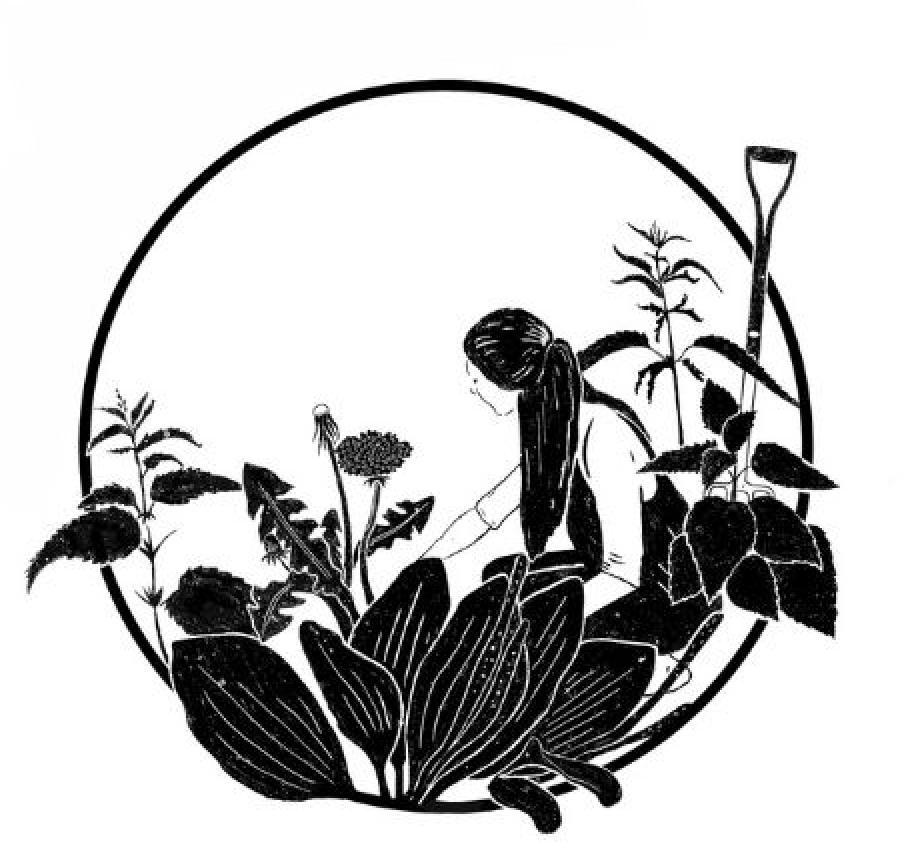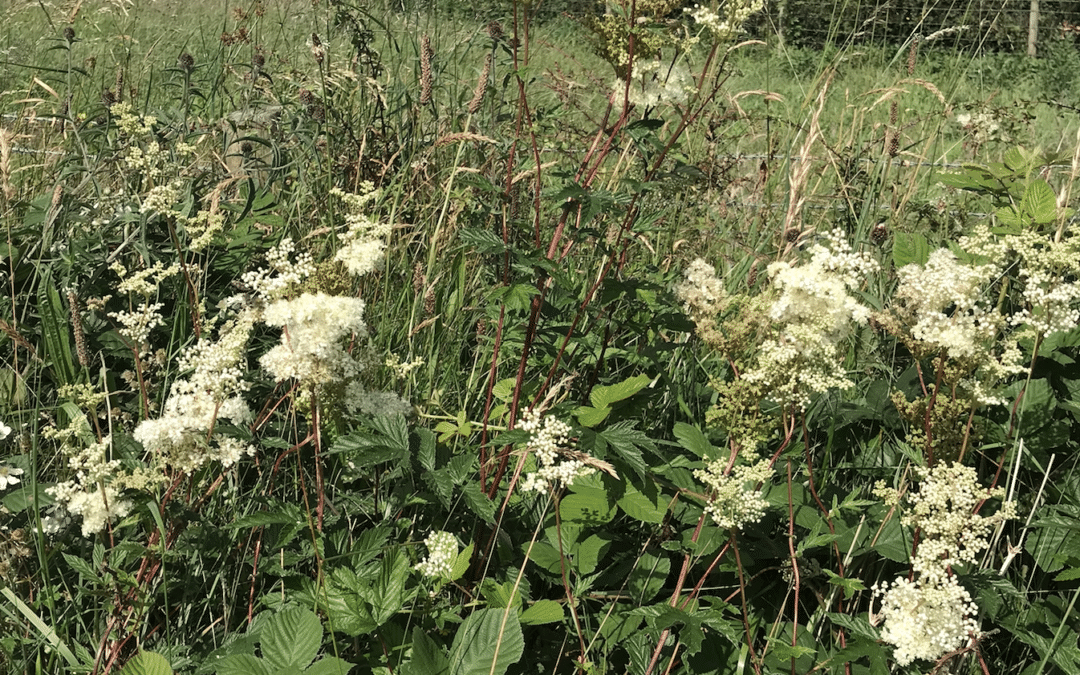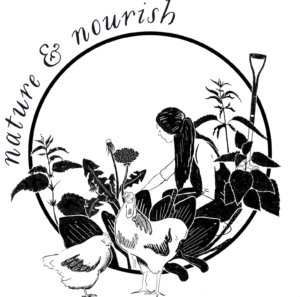Herbal Spotlight on Meadowsweet & Honeysuckle
Forging tips, identification, wild food recipes and herbal remedies
What could be more summery than the sight and smell of honeysuckle winding it’s way through the hedgerows and frothy meadowsweet lining the river ways?
These two summer plants are both intensely fragrant and wonderful additions to any keen herbalists kitchen and two that are currently overflowing from the hedgerows on our farm. Although if these plants have finished flowering you should be able to find dried versions to work with.
In todays’ herbal spotlight I’ll be delving into the culinary and medicinal uses of these two beautiful plants and well as including some of my favourite recipes.
Identifying Honeysuckle
Honeysuckle, Lonicera japonica is such a great addition to any hedgerow. Sometimes called woodbine or Japanese honeysuckle it will happily climb up existing walls and hedges and imparts the most intense honeyed fragrance which is at it’s most intense in the evenings.
Honeysuckle has delicate Trumpet shaped flowers in a yellow pink hue (although there are red varieties too often found in gardens are these are not edible) It has 5 stamen and 1 protruding stigma as well as leaves shaped in a long oval. After flowering Honeysuckle produces round shiny red berries which are poisonous.
Health Benefits and Herbalist uses of Honeysuckle
The flowers however are very much edible. Weirdly enough as a child I instinctively knew that honeysuckle was edible and would often nibble on the flowers as a child in order to suck out the lovely sweet nectar but it was only recently that I realised the numerous uses honeysuckle has.
The honeysuckle flowers are not only cooling (great for hot flushes) but their drying properties and antiseptic nature also work as a great cough syrup, easing spasmodic and irritated coughs and well as helping to heal ulcers and acting as an expectorant.
The flowers also contain salicylic acid and can be used to gently reduce inflammation.
A nice way to harnish these healing powers of honeysuckle is through a syrup. This would be a great remedy for coughs and sore throats.
Here is my quick and easy Honeysuckle cough syrup recipe:
Homemade Honeysuckle Cough Syrup
A medium sieve full of Honeysuckle Flowers
500ml Water
500ml Caster Sugar
Combine the honeysuckle flowers and water in a large pan and bring to the boil. Turn off the heat and cover. Leave overnight. Strain through a fine muslin and return the infused water to a clean pan with the sugar, heat until all the sugar has dissolved. Simmer for approx 10 minutes until a syrup consistency. Pour into clean dry bottles. Will last 6 months or longer if frozen.
Cooking with Honeysuckle
Although it’s health benefits alone make honeysuckle worth using, its also a great flower to use in the kitchen and is particularly lovely in sorbets, strewn through salads, as a decoration, and as an infused tea. If you want to preserve the delicious fragrance and taste of honeysuckle a cordial made in the same way as an elderflower cordial is incredible as is an infused vinegar made with honeysuckle flowers and white wine vinegar. You could also use the honeysuckle cough syrup in the kitchen as a drizzle over porridge and pancakes, diluted in water, as a sweetener in a herbal tea or any recipe that asks for honey!
Honeysuckle Tea recipe
Although a great remedy for coughs, this tea is also a taste of summer in a cup and perfect for drinking outside in the evening as the sun begins to set.
A couple of honeysuckle blooms
Cup of boiling water
Pour the boiling water over the blossoms in a large mug. Allow the flowers to infuse for up to 15 minutes. Remove blossoms and drink. Add honey for sweetness.
Identifying meadowsweet
Meadowsweet, Filipendula Ulmaria, was a plant I only came across once I moved up to the farm. And thanks to the wetter climate, come summer every lane, and river was surrounded by these beautiful puffs of cloud like white blossom. Intrigued I did my research and was delighted to learn that these gorgeous flowers were not only edible but also good for you too!
Meadowsweet loves to grow in damp places which is why I first spied it growing happily along a river bank. But it will also grow happily in ditches too. The creamy white flowers grow on skinny red stems with grooved dark green leaves. The scent of meadowsweet is quite beautiful, a kind of spicy marzipan scent.
Traditionally meadowsweet was a sacred herb to the druids, who made the flower into a fermented mead to drink during festivities and is likely were it’s folk name of meadwort originated. Meadowsweet was also used as a fragrant floor covering in the 16th century when herbs were often strewn across dirt floors to scent and sanitise the area. Meadowsweet with its delicious scent and healing properties was a popular choice of Queen Elizabeth 1!
Health Benefits and Herbalist uses of meadowsweet
Like honeysuckle, meadowsweet leaves also contains salicylic acid, a natural anti-inflammatory found in aspirin. Traditionally meadowsweet was a popular medicine and considered a cure for headaches, probably due to the salicylic acid. This also allows meadowsweet to be a good anti inflammatory herb but is far more gentle than aspirin thanks to it’s mucilangious properties.
In particular Meadowsweet is a wonderful herb for the digestion. It can help calm troubled tummys thanks to it’s astringent properties and ability to inhibit a gastric bacteria called helicobacter pylori which can cause stomach cancer, ulcers and gastritis in some cases.
For these reasons it is well worth keeping some dried blossoms in a jar to make into a soothing tea when your stomach is feeling out of sorts.
The flowers are also good for calming sore arthritic joints and would be ideal in a salve.
Here’s my easy to make salve recipe:
DIY Meadowsweet Salve
26ml infused meadowsweet oil
4g beeswax
Melt the wax in a double boiler. Add the oil. Pour into a small 30ml jar. Let cool overnight.
Cooking with Meadowsweet
Meadowsweet is my definitely one of my favourite summer flowers and actually my pick over elderflower for a cordial. The flavour is so delicious and the blossoms so easy to harvest that I beg you to make up and batch and see if you’re also converted.
You could also try your hand at making its namesake, a traditional meadowsweet mead! Meadowsweet would also be delicious in icecream, teas, syrups, sorbets and a panna cotta.
Meadowsweet Ice-cream Recipe
a Handful meadowsweet blossom
284ml double cream
300ml milk
115g caster sugar
1tsp vanilla extract
3 egg yolk
Combine the milk, cream as well as the meadowsweet blossoms into a pan and heat until almost at boiling point. Remove from the heat and let the blossom infuse into the liquid for up to an hour.
In another bowl beat the sugar with the yolks until thickened and pale. Gradually add the infused milk and cream.
Reheat on a medium heat stirring often until the mixture thickens. Pour into a clean bowl and place in the fridge to cool. Now churn in an ice-cream machine and enjoy!
DONT USE THESE HERBS IF YOU HAVE SENSITIVITY TO ASPRIN OR SALICYLIC ACID. I am not a medical professional so always get medical advice and seek the advice of a professional when using herbs medicinally.



